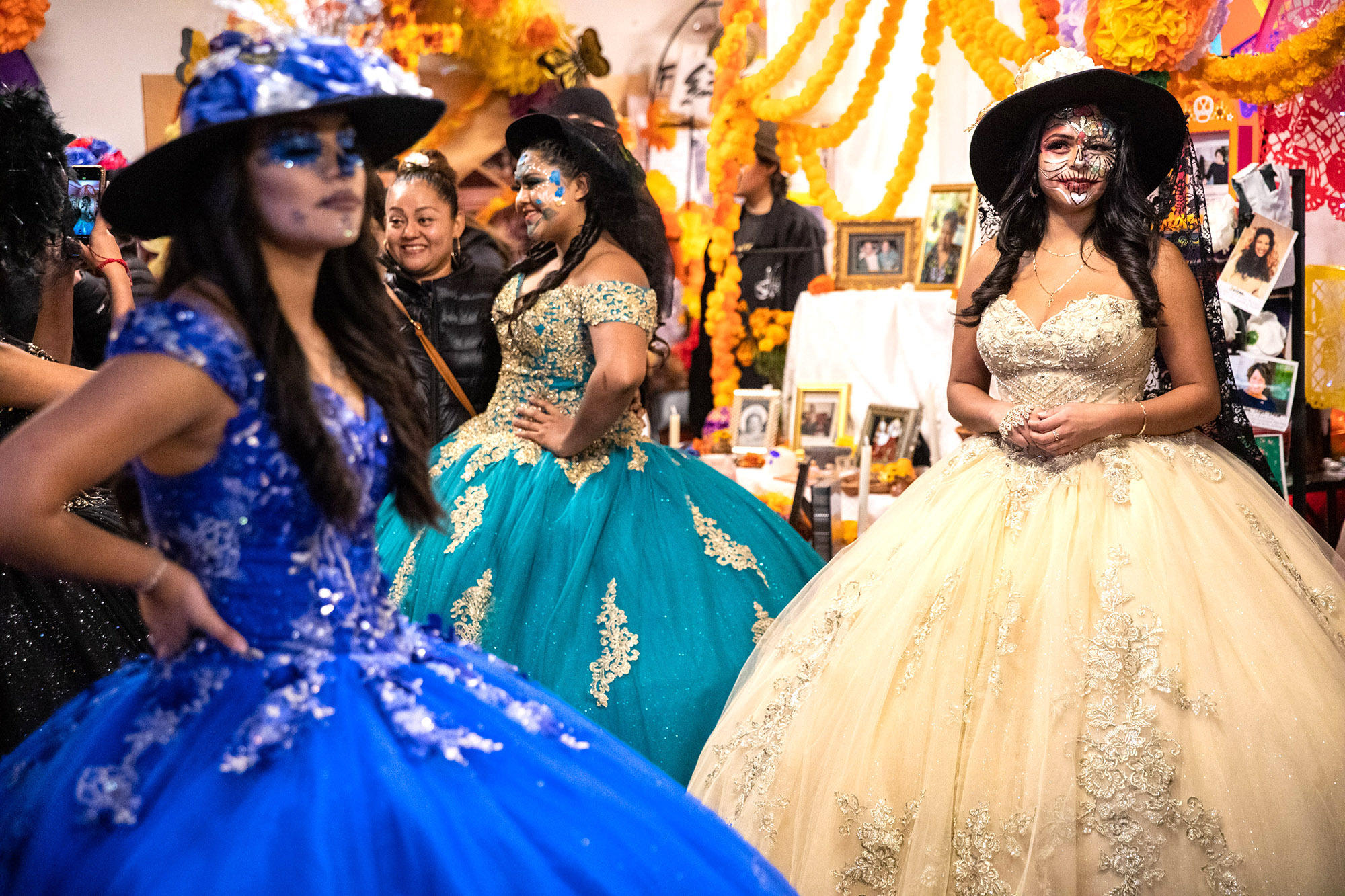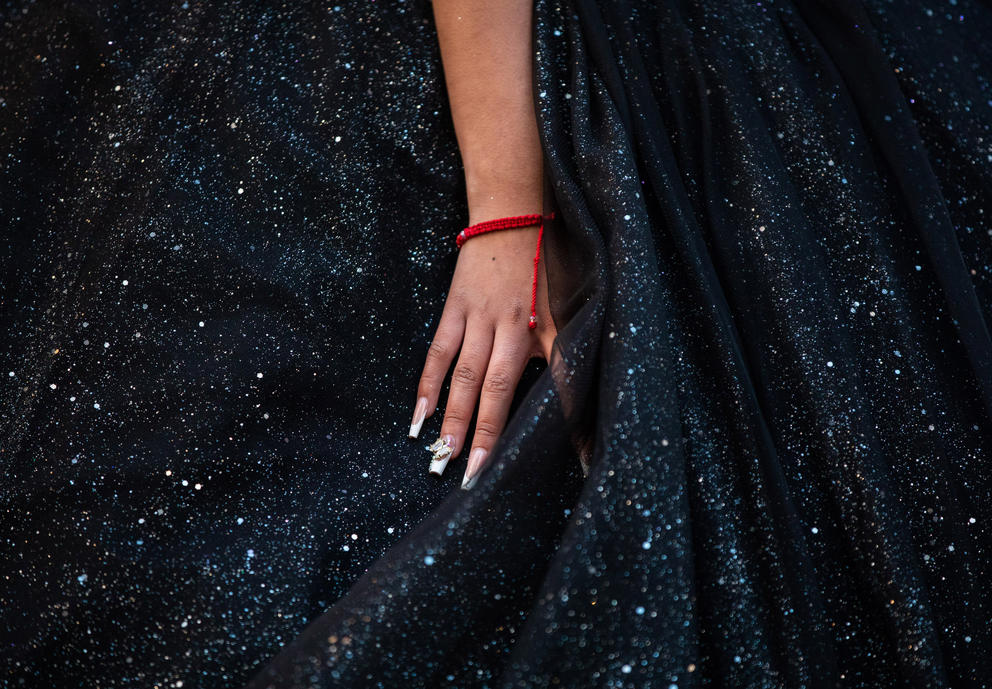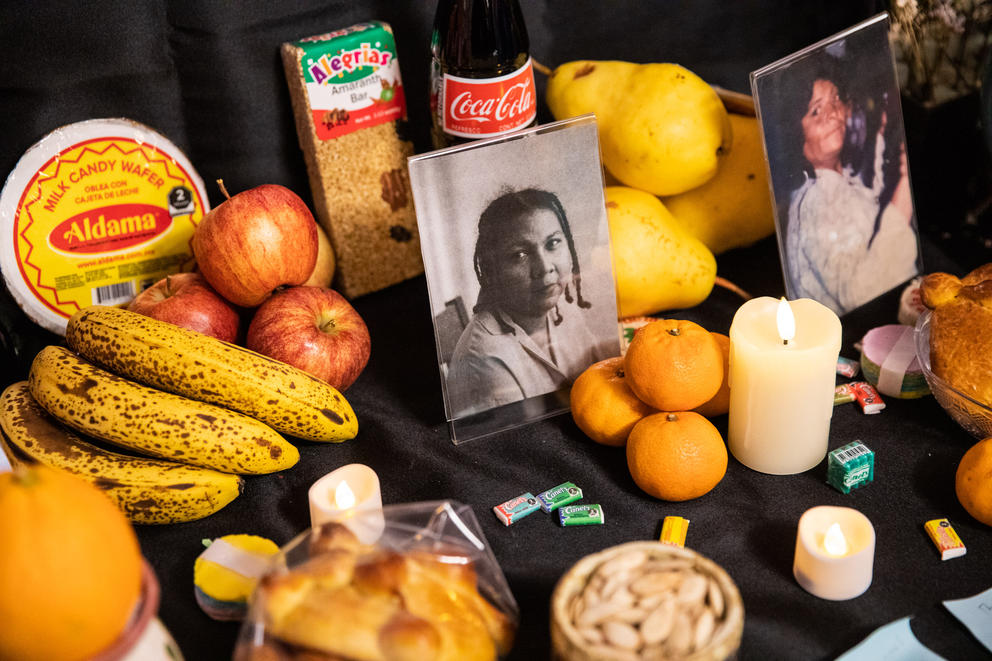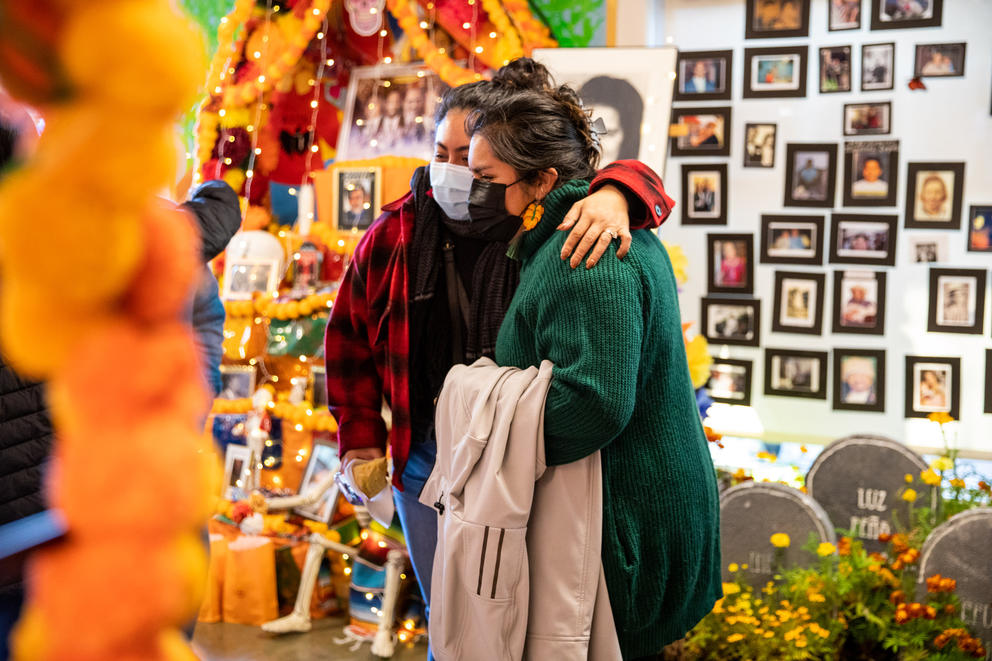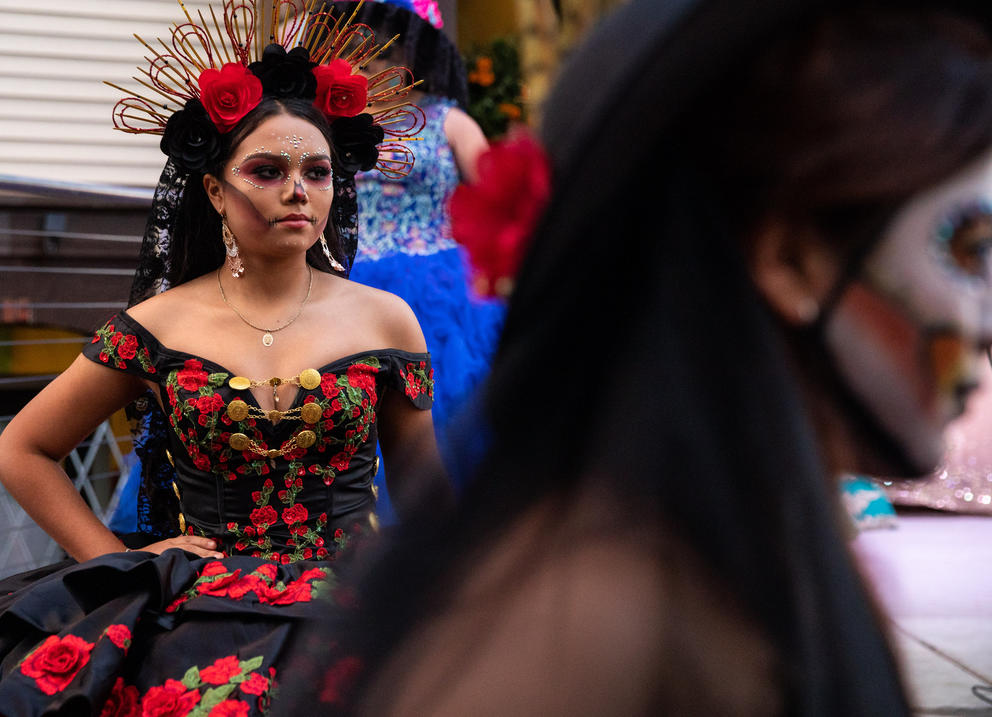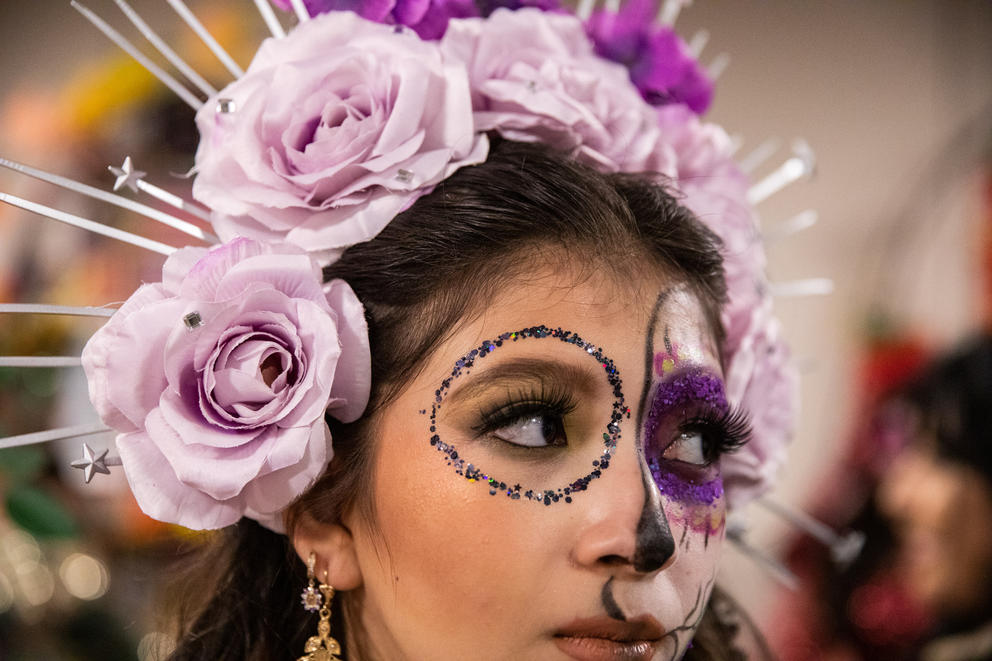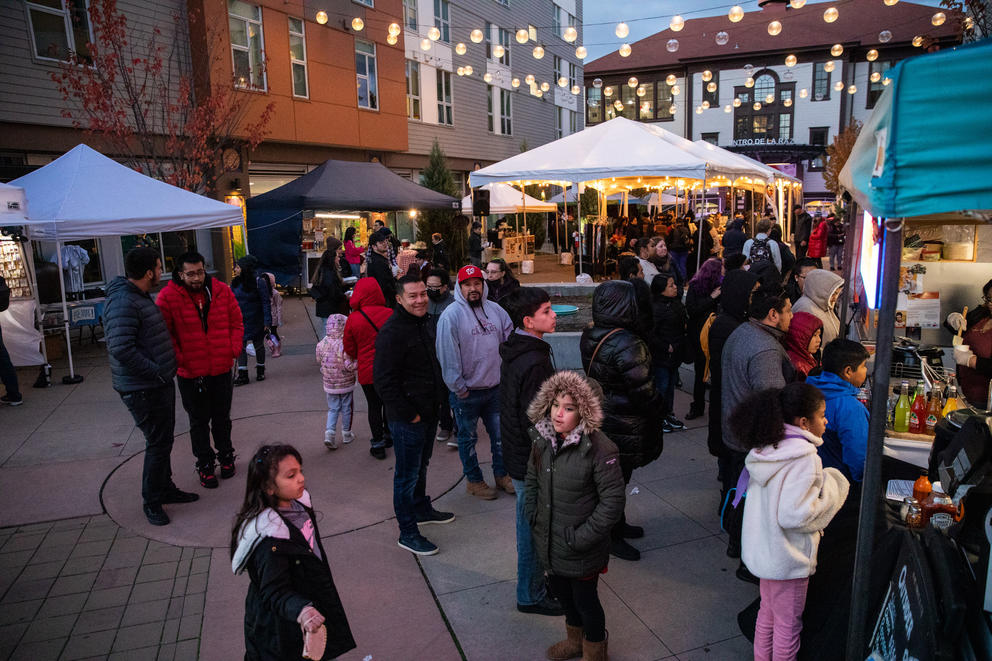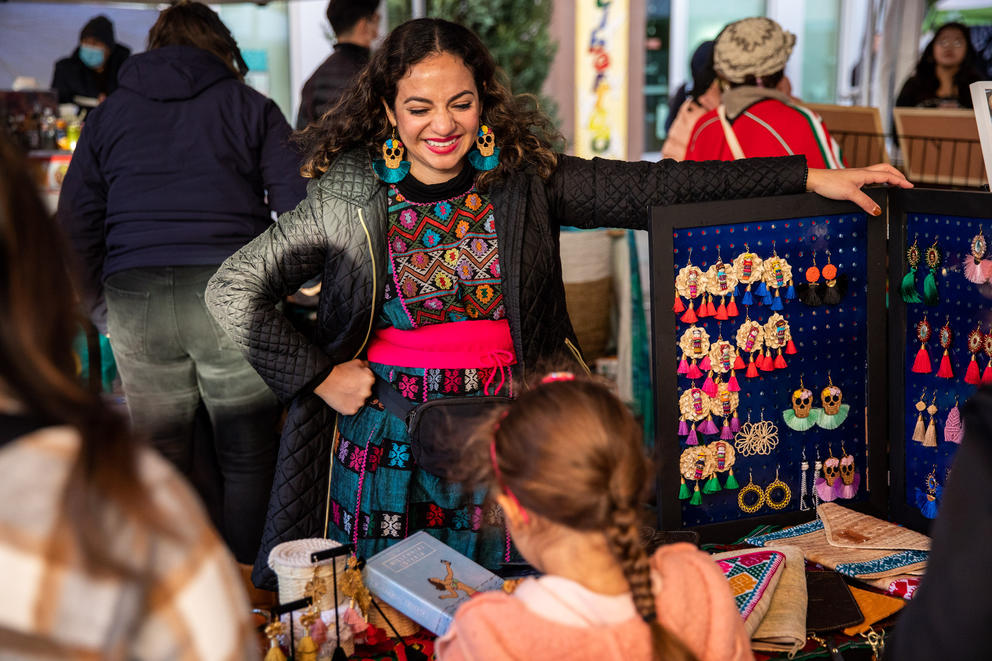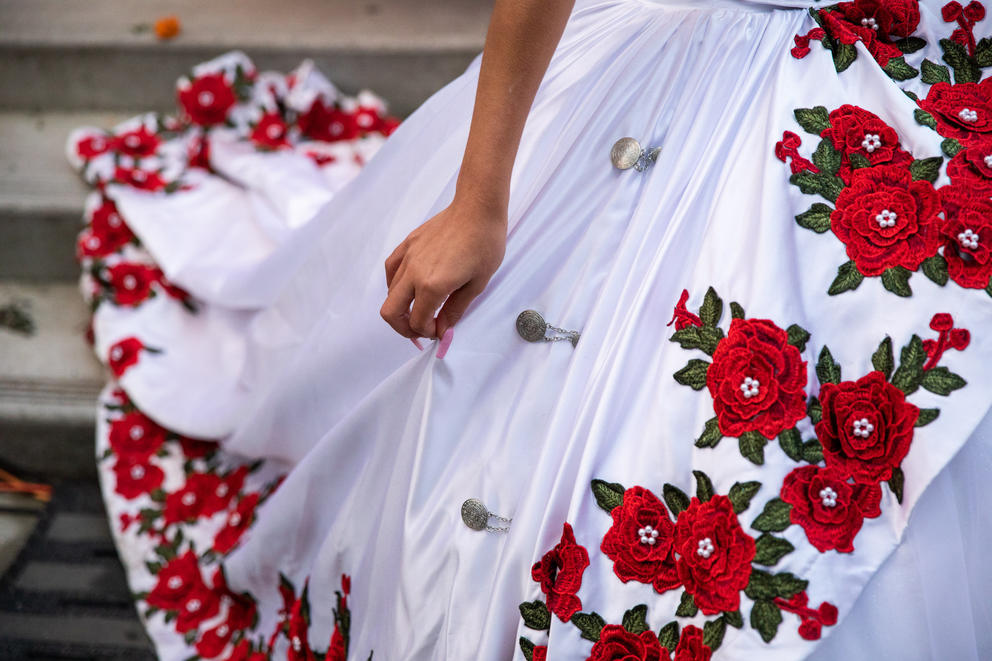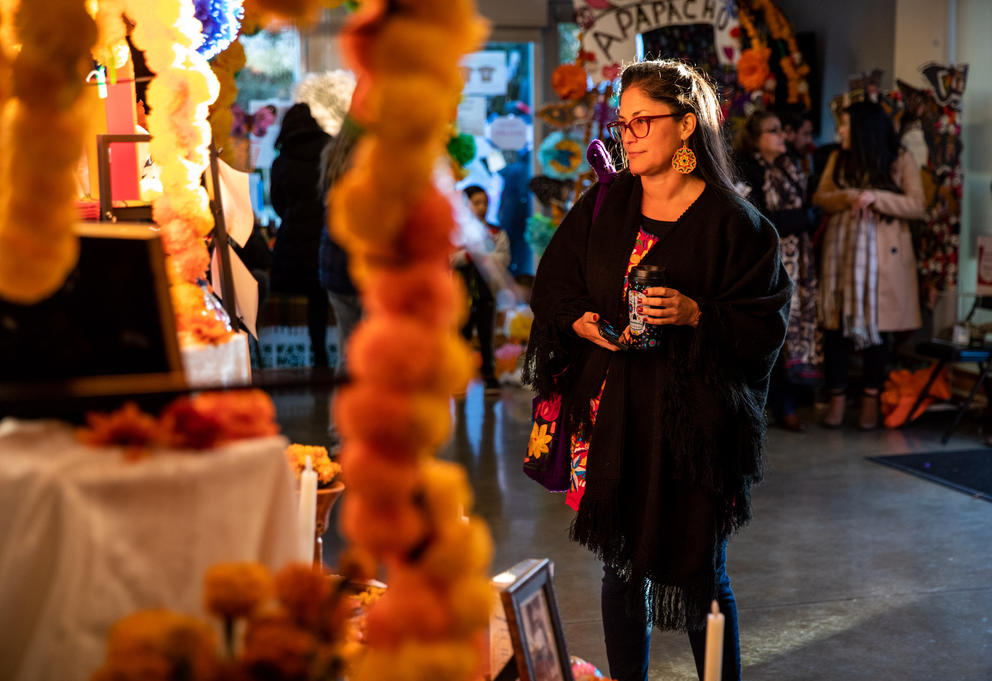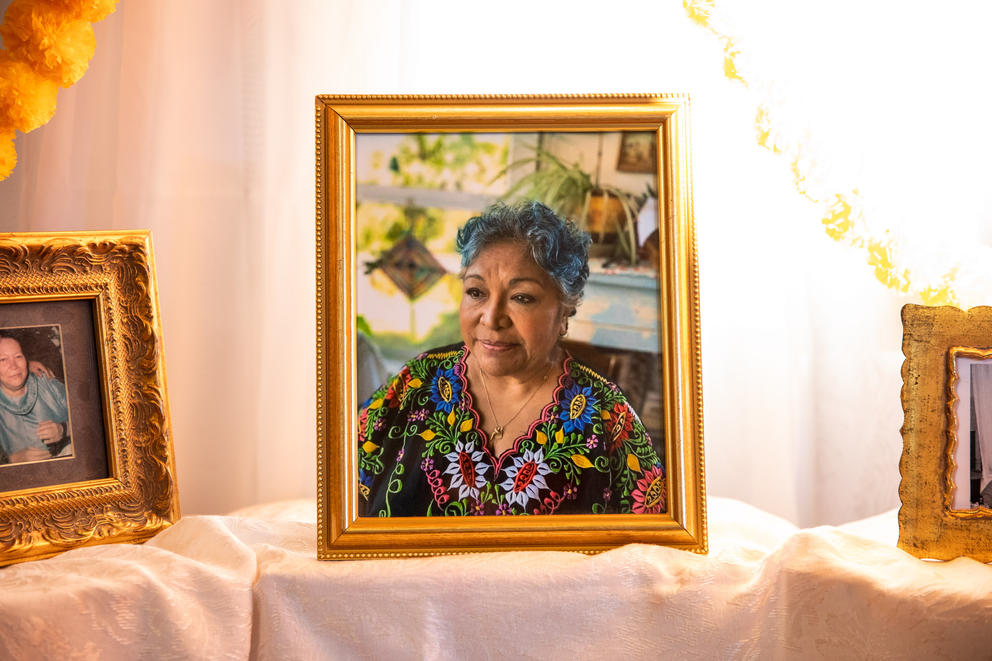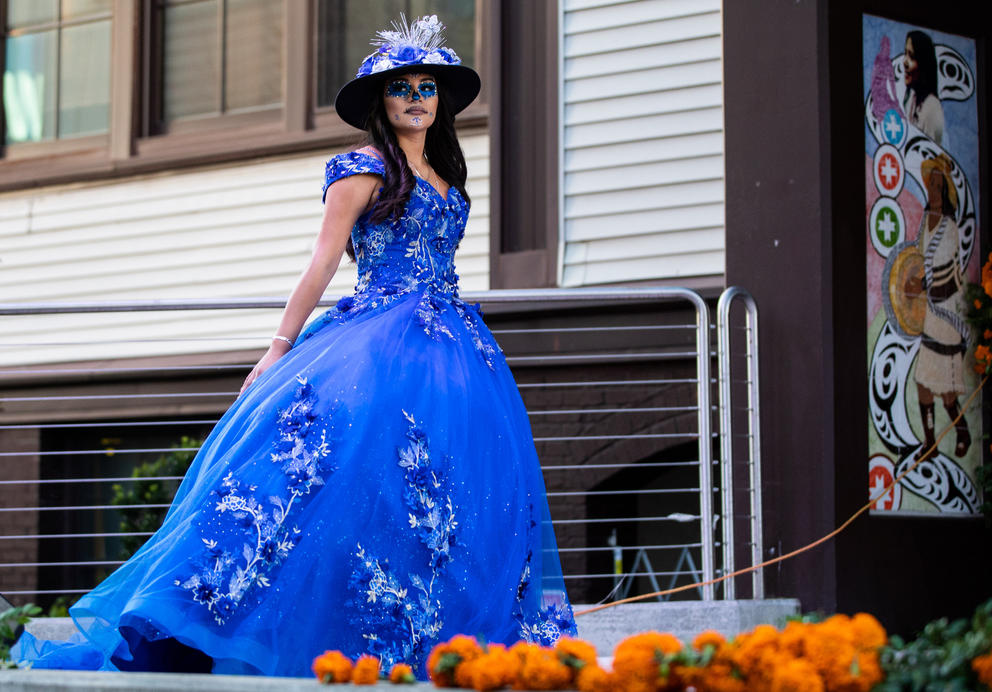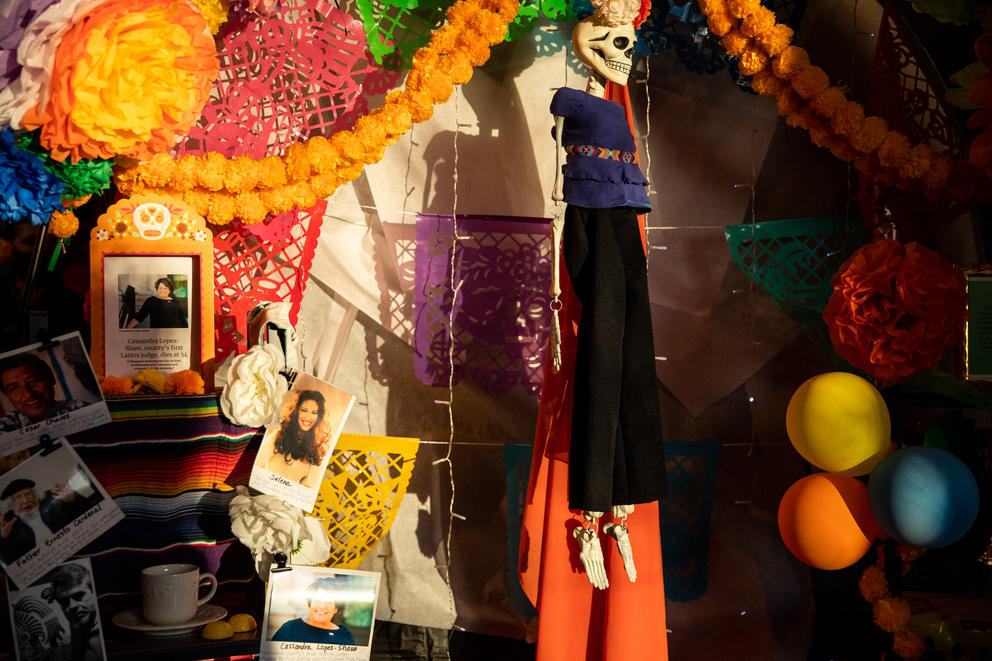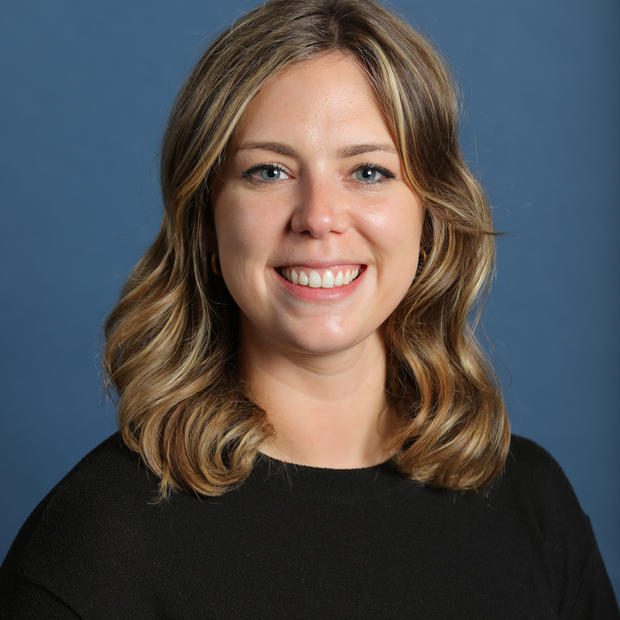Handmade dresses for women’s La Catrina performances are seen here at El Centro de la Raza’s Día de los Muertos celebration in Beacon Hill on Saturday, Nov. 5, 2022. La Calavera Catrina is a Day of the Dead tradition in which women paint their faces as a skull and wear elegant dresses and bonnets. The original image of La Catrina comes from an illustration satirizing rich, well-dressed women, but its meaning has evolved to symbolize an acceptance of death and remind people of their morality. (Amanda Snyder/Crosscut)
The crowds returned this past weekend to a celebration held outdoors, in late-pandemic fashion, and featuring vendors selling artisan crafts from Mexico, families snacking on pan dulce (sweet bread) and young women in skull-painted faces and elegant dresses debuting as the traditional La Calavera Catrina — known more simply as La Catrina, “the elegant skull.”
For business owner Alejandra Pérez Nuño, the event marked the first time since the pandemic that she could sell her products in person.
As the owner of Teporingo!, she sells blanket backpacks and tote bags with different designs of traditions and elements that represent Mexico. Since moving from Mexico to the United States in September 2021, she has struggled to sell those products through Amazon. That lack of online engagement worried Pérez Nuño.
“I was super-nervous [to sell here] because I was like, ‘Oh my God, I don't know if people [will] like my products,’” Pérez Nuño said.
Those fears were put to rest as celebrants purchased much of her inventory.
“To see that people in this community, in this event, like my products is amazing," Pérez Nuño said, beaming. "It's like a home to me.”
The return of the Dia de los Muertos event comes as El Centro de la Raza celebrates a milestone. It was 50 years ago that activists peacefully occupied the abandoned Beacon Hill elementary school the center now calls home. That protest lasted three months and was spurred by frustrations over a decline of social services in Seattle. The center has since become a center for social justice, support of those in need and service for the Latino community. The Dia de los Muertos celebration has become an important date on its calendar.
A major part of that celebration has always been the ofrendas, or altars, featuring photographs of departed family, friends and idols, along with bright flowers, sweet foods and personal tokens of remembrance.
Among the photos on a number of those altars this year was that of Francisca Garcia, who had worked on curating this year’s event before passing away in July. One of those photos was provided by Garcia’s daughter, Luna Garcia, who was invited by organizers to place something on an altar in her mother’s honor.
Luna remembers her mother as a “force of nature,” and said she had a “certain amount of magic about her.” She added that her mother loved this event, a tradition passed on by Luna’s grandmother.
Día de los Muertos is “not only a time about remembering those who have passed,” Luna said, but “celebrating their life and making sure that we celebrate each other when we can.”
This photo essay is part of an ongoing series on holiday celebrations. If you have a celebration you would like Crosscut to attend, please let us know by emailing amanda.snyder@crosscut.com

